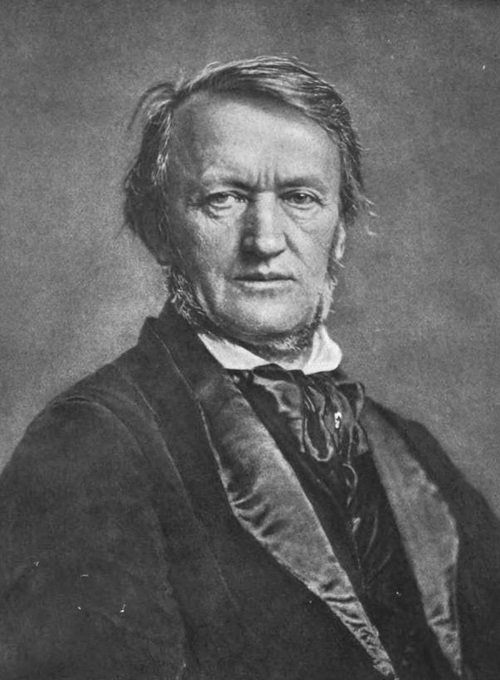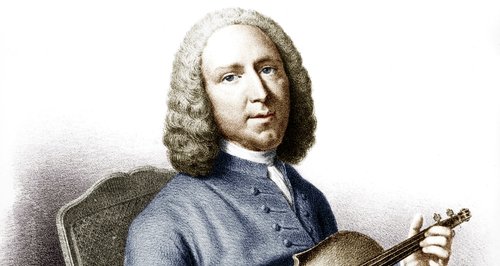= the musical idiom of the mid-18th century (that developed mostly in opera) became pervasive in instrumental music
= the new idiom (periodic phrasing, songlike melodies, diverse material, contrasts of texture and style, touches of drama) made it easier to follow instrumental music
= instrumental music was a form of entertainment for players and listeners
= the piano replaced the harpsichord and clavichord as the favorite keyboard instrument
= new chamber ensembles, notably the string quartet, were developed for social music-making
= the sonata became the leading genre for solo and chamber music
= the concerto and symphony dominated orchestral music
= all these genres had deep roots in Baroque music, but the new musically-centered idiom brought new forms, including sonata form and other adaptations of binary form (adaptations of AA, ABA, etc)
INSTRUMENTS and ENSEMBLES
= instrumental music served a variety of social roles
= all levels of society enjoyed music for dancing, from written-out orchestral dances for the upper echelons to folk tunes passed down by oral tradition for the peasantry
= the piano
= also called pianoforte (Italian for “soft-loud”)
= invented by Bartolomeo Cristofori (1655-1732) in Florence in 1700
= the string quartet
= chamber music for 2 to 5 strings alone was common especially the string quartet
= 2 violins, viola, cello
= the 1st violin often carries most of the melodic substance
= cello provides the bass
= inner voices fill out the texture
= however, knowing that players enjoyed hearing themselves in extended solos, composers also wrote concertante quartets in which all players are of equal importance, as well as quartets in which players exchanged shorter motives as if in a musical conversation
= they are now played in concerts (this also happened occasionally before),
although primarily intended for the enjoyment of performers and companions
= wind instruments and ensembles
= the clarinet (a single-reed wind instrument) was invented around 1710 and by 1780s it had its place alongside the oboe, bassoon, flute as the standard woodwind instruments in wind ensembles
= amateurs tended not to play wind instruments other than the flute; other wind instruments were considered difficult for amateurs and inappropriate for women because they required use of the mouth and lips
= orchestra
= the 18th century concert orchestra was much smaller than today’s
= in the last quarter of the 18th century, the basso continuo was gradually abandoned in orchestral and ensemble music because all the essential voices were present in the melody instruments
= the responsibility for directing the group was formerly the job of the harpsichord player but had fallen to the leader of the violins
= in the typical orchestration in the mid-18th century
= strings: had all essential musical material
= winds and horns: only for doubling, reinforcing, filling in the harmonies
GENRES and FORMS
= many of the characteristic genres of Baroque instrumental music fell out of fashion in the Classic period (preludes, toccatas, fugues, chorale settings, dance suites)
= the major keyboard genre became the sonata, though composers continued to write variation sets, fantasias individual dances for keyboard
= sonata
= written for solo instrument plus keyboard and named by the number of players (duet, trip, quartet, quintet, and so on)
= main orchestral genres
= concerto: an extension of the Baroque solo concerto
= symphony: derived from Italian opera sinfonia or overture
= orchestral concerto
= 3 movements, typically fast-slow-fast (with slow in a closely related key)
= later on, symphonies and quartets often had four movements (fast-slow-minuet-fast, or fast-minuet-slow-fast)
= it was not until late in the 18th century that standards formats for most genres became the norm
= sonatas: 3 movements
= string quartets: 4 movements
= symphonies: 4 movements
= continuity and change
= the concerto, sinfonia, sonata for keyboard, soloist for keyboard, chamber ensemble had all been prominent since the late 17th century
= what is new/distinct from their Baroque counterpoints is the content (of each genre, like forms used). they absorbed the new galant style (emphasizing expressive melody in short phrases, arranged in periods, over light accompaniment)
= preference for major mode
= another difference from the Baroque era
= the major mode was considered more pleasing and natural, associated with pleasant emotions
= the focus on major for primary keys allowed composers to use closely related minor keys for contrast
= major mode/happy stability (stable key and predictable phrasing) -> minor key (dangers, trials, frequent modulation, unstable phrasing) -> back to home key. this theme became the paradigm of Classic-era form
= binary forms
= most forms of the Classic era are essentially harmonic (tonic modulating to dominant, then back home)
= 3 types of binary form
= simple binary form
= the two sections are roughly equal in length and feature material that is different or loosely related
= balanced binary form
= was produced to emphasize the arrival on the dominant and the return to the tonic
= presenting new material in the dominant at end of 1st section, and to repeat this material in tonic at end of 2nd section (like a rhyme that serves to confirm the return to the home key)
= this approach heightens the contrast between I (tonic) and V (dominant)
= rounded binary form
= repeats the material that appeared in 1st section in the return to the tonic in 2nd section
= minuets often feature this form
= sonata form (see previous entry, an analysis of Bach’s composition, for more info on sonata form)
= also called first-movement form, was the most common for the first movement of a sonata, chamber work, or symphony in the Classic period
= 2 strategies (reprising the opening idea, and restating in the tonic material that first appeared in the dominant) are joined in this sonata form
= other forms
= several musical works expanded upon the binary form in various ways
= slow-movement sonata form (or sonata form without development): slow movements omitting the first period of the 2nd section, has no repeats, but follows “exposition-development-recapitulation” (see previous entry)
= variations form: in slow movements and occasional first or last movements, presents a small binary form as a theme, followed by several embellished variants
= minuet and trio form: joins 2 binary-form minuets, repeating the first after playing the second (the trio) to produce an ABA pattern (often present in quartet and symphonies)
= rondo form: presents a small binary form or single period as a theme, alternates this with other periods called episodes (which are usually in other keys), in a pattern such as ABACA, or ABACADA (A being the short theme)
KEYBOARD MUSIC
= keyboard works: sonatas, rondos, variations, minuets
= sonata most challending and rewarding for both performer and listener
= Domenico Scarlatti (1685-1757)
= one of the most original and creative keyboard composers of 18th century
= son of Alessandro Scarlatti
= left Italy and served the king of Portugal
= the king’s daughter was his pupil and when she married Prince Ferdinand of Spain in 1792, Scarlatti followed her to Madrid and he served the Spanish court for the rest of his life, somewhat isolated form the rest of Europe
= he typically used balanced binary form in his sonatas. major keys usually following
||: A B C :||: D B C :||
I -> V v V -> I i I
= outside Italy, the sonata wascultivated particularly by German composers, including Carl Emanual Bach (see previous entry: analysis of J.C. Bach’s work for more info on C.E. Bach)
ORCHESTRAL MUSIC
= orchestral music grew importance in 18th century as public and private concerts became more popular and included orchestral music
= symphony
= the major orchestral genre mid-to-late 18th century
= a work usually in 3 or 4 movements
= primarily homophonic style, without the division between orchestra and soloist that distinguishes the concerto
= originated in Italy around 1730 and spread across Europe (Germany, Austria, France, England)
= the symphony had many parents:
= the Italian sinfonia (or opera overture) from which the symphony takes its name
= the orchestral suite is one source of binary forms common in the symphon
= most prominent composer Giovanni Battista Sammartini (1700-1775) (more info in previous entry: analysis of J.C. Bach’s composition)
= symphonie concertante
= as concert life expanded ~1770, a new genre emerged in response the Parisian (Paris) public taste for melodies and solos alongside big orchestral sonorities: symphonie concertante
= a concerto-like work with 2 or more solo instruments in addition to the regular orchestra, the main material entrusted to the soloist
= among those writing symphonies concertantes in Paris was violinist, conductor, composer Joseph Bologne, Chevalier de Saint-Georges (1745-1799), the first composer of African descent to achieve recognition in Europe and among the first from the New World
= the popularity of symphonies concertantes waned by 1830, displaced by anew focus on individual virtuosity in solo recitals and concertos
= concerto (see previous entry for more info on concerto and J.C. Bach)
= the solo concerto remained popular for virtuoses, even while symphonic form gained attention through 18th century
= Giuseppe Tartini (1672-1770) founded a violin school in Padua, Italy, that attracted students from all over Europe. he was the most renowned violin virtuoso in the generation after Vivaldi
= Johann Christian Bach (1735-1782) was among the first to compose piano concertos
= cadenza
= by Bach’s time, it had become tradition for the soloist to play a cadenza just before the final orchestral ritornello
= developed from the trill and runs that singers inserted
= by convention, candenzas are usually introduced by a 6-4 chord/chord in 2nd inversion, and the soloist signals the orchestra to reenter by playing a long trill over a dominant chord
= entertainment music
= some pieces were written for background music (during a meal, party, other social occasion)
= genres in this category included: divertimento, cassation, serenade. all 3 are multimovement pieces for orchestra or other combinations of winds and strings. it might include a mix of dances
= there is more orchestra and ensemble music for entertainment than for concert music
THE SINGING INSTRUMENT (instrumental music)
= the instrumental music of this era was designed to appeal to most people, be understandable on first hearing, pleasing to performers and listeners
= the tremendous numbers of new pieces proved that the consumers/audience were eager for this kind of new music
= most of the instrumental music composed and published during this time passed from the stage quickly, displaced by new works and styles (like popular music of later centuries)
after overshadowing their father for a generation or two, C.P.E. Bach and J.C. Bach were then overshadowed by Haydn and Mozart, and their music was little played during the 19th century









